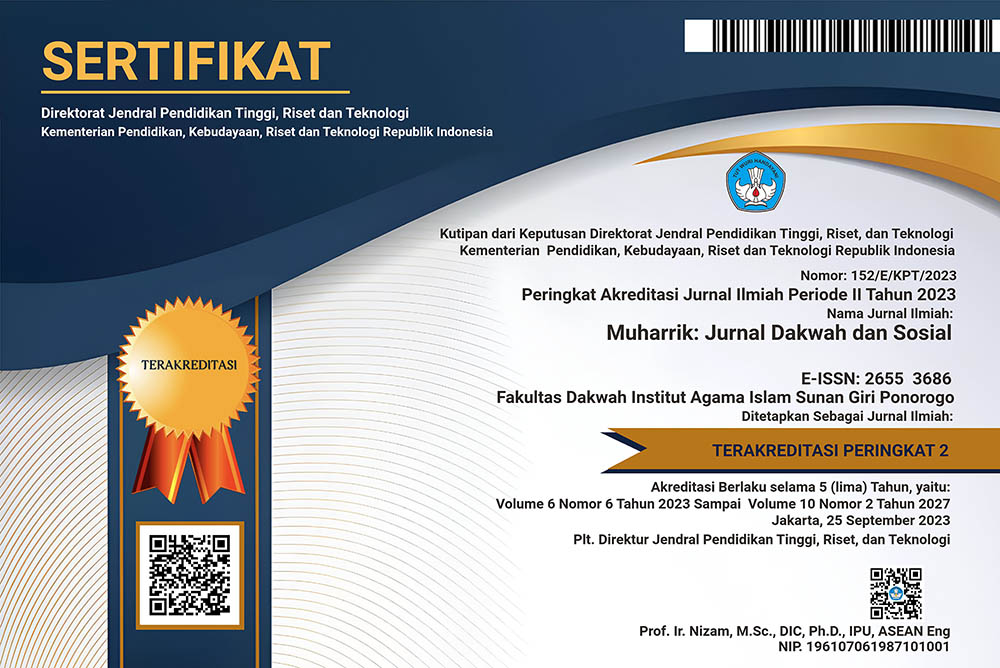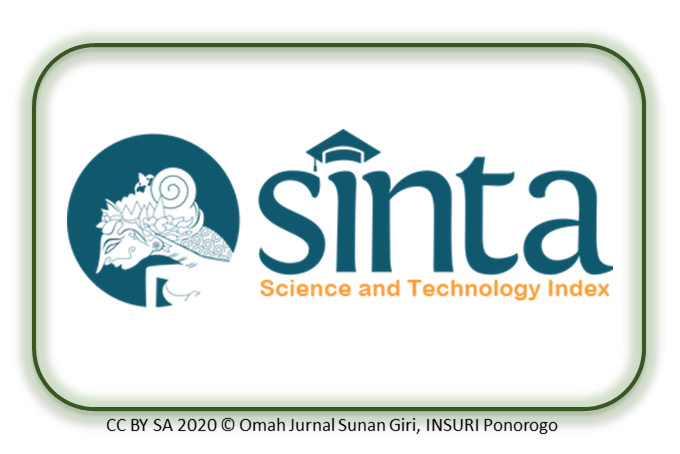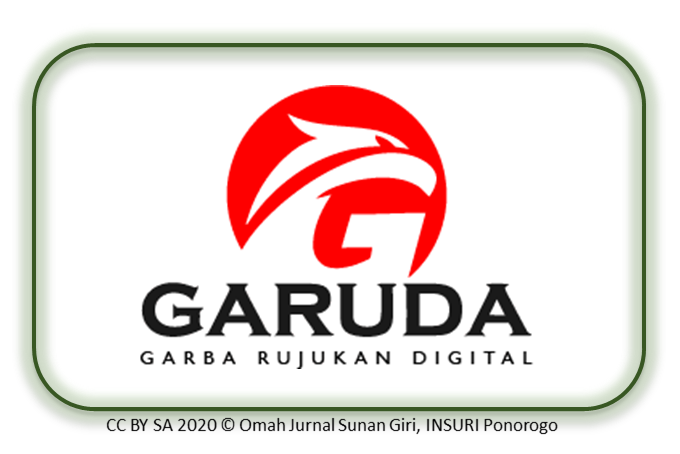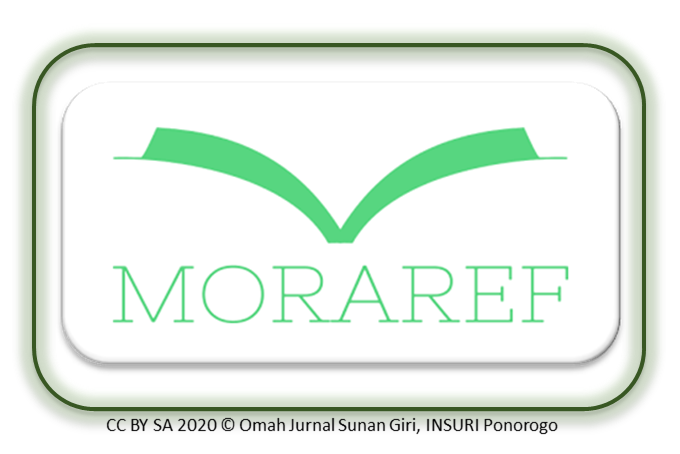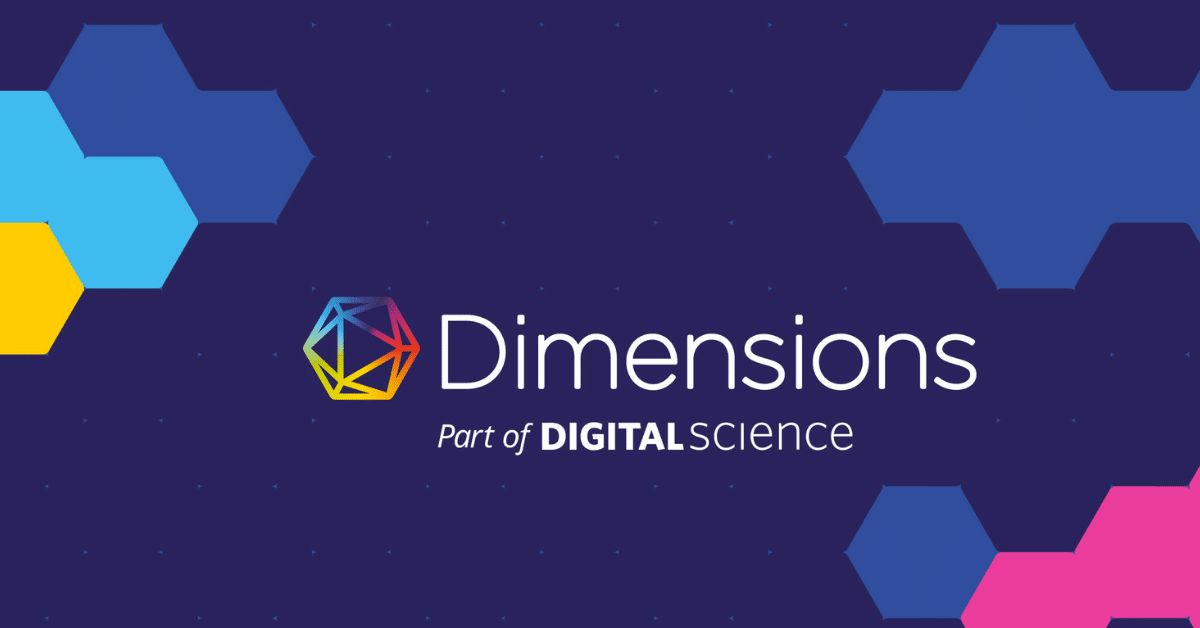Integration of Da'wah Ethics and Psychology in Banjar Culture: A Humanistic Approach to Religious Communication
DOI:
https://doi.org/10.37680/muharrik.v8i2.7922Keywords:
Banjar Culture, Da'wah Ethics, Humanistic Communication, Religious PsychologyAbstract
Religious communication in multicultural societies requires approaches that are both ethically sound and culturally sensitive. While da'wah efforts in Indonesia often emphasize textual or dogmatic methods, they frequently overlook the psychological dimensions of communication and the importance of local wisdom. This study addresses that gap by exploring how da'wah ethics and psychological principles can be integrated within the cultural framework of the Banjar community in South Kalimantan. Known for their strong Islamic values and traditions such as ba’iman (faith), ba’adab (civility), and ba’budaya (cultural identity), the Banjar people provide a relevant context for examining localized religious outreach. Employing a qualitative-descriptive approach with literature analysis, the study uses a humanistic communication framework that prioritizes empathy, respect, and psychological awareness in message delivery. The findings show that aligning da'wah with Banjar cultural values and emotional norms not only enhances message receptivity but also reduces resistance to religious messages. This integrated approach fosters deeper engagement, strengthens social cohesion, and makes religious communication more relevant to the lived experiences of the audience. The study contributes to the discourse on contextualized da'wah by proposing a model that respects both Islamic ethical principles and the cultural psychology of local communities.
Downloads
References
Agung, D. A. G., Nasih, A. M., & Kurniawan, B. (2024). Local wisdom as a model of interfaith communication in creating religious harmony in Indonesia. Social Sciences & Humanities Open, 9, 100827. https://doi.org/https://doi.org/10.1016/j.ssaho.2024.100827
Akhmad, B. A., Sarwani, S., Astuty, S., & Ramadhan, M. M. (2020). The Dynamics of Political Communcation in the South Kalimantan Society. 2nd Jogjakarta Communication Conference (JCC 2020), 459(Jcc 2020), 67–72.
Amin, Z. F. (2021). Tradisi Jujuran pada Praktek Peminangan masyarakat Banjar di Kel. Tembilahan Hulu Kec. Tembilahan Hulu Kab. Indragiri Hilir Provinsi Riau. Diss. Tesis, Pascasarjana Institut Agama Islam Negeri Ponorogo.
Anwar, K., Saefulloh, A., Surawan, S., & Nalus, S. (2025). Dayak Ngaju Customary Sanctions as a Rehabilitation Mechanism for Drug Addicts in Central Kalimantan. El-Mashlahah, 15(1), 165–188. https://doi.org/http://dx.doi.org/10.23971/el-mashlahah.v15i1.9813
Anwar, K., Surawan, S., & Awang, S. (2024). Social Media And Religiousity : Shifting The Lifestyle Paradigm Of Urban Muslim Students. Akademika: Jurnal Pemikiran Islam, 29(2). https://doi.org/10.32332/akademika.v29i2.9181
Arif, M., & Lessy, Z. (2022). Another Side of Balinese Excoticism Local Wisdom of the Muslim Community in Gelgel Village, Klungkung Regency, for Preserving Harmony between Religious Communities in Bali. INFERENSI: Jurnal Penelitian Sosial Keagamaan, 15(2), 185–216. https://doi.org/10.18326/infsl3.v15i2.185-216
Arjawa, I. G. P. B. S., & Zulkifli, Z. (2021). The Social Integration of Hindu and Muslim Communities: The Practice of" Menyama-Braya" in Contemporary Bali. Studia Islamika, 28(1), 149–178. https://doi.org/https://doi.org/10.36712/sdi.v28i1.10914
Azhari, F., Lahmuddin, L., & Ritonga, H. J. (2023). The role of religious communication in North Sumatra’s governmental institutions. Jurnal Studi Komunikasi (Indonesian Journal of Communications Studies), 7(3), 962–976. https://doi.org/10.25139/jsk.v7i3.7407
Azwar, W., & Muliono, M. (2022). MULTIFACED POLITICS A Study on Polarization of Political Behavior of Tarekat Community in West Sumatra, Indonesia. Al-Jami’ah: Journal of Islamic Studies, 60(2), 315–346. https://doi.org/10.14421/AJIS.2022.602.315-346
Din, N. M., Zulfaris, M., Salleh, M., & Muhammad, M. Z. (2025). The Accomplishment of Da ’ wah in Integrating Islamic Value into the Cultural Orang Asli of Malaysia. International Conference on Islamic Economics (ICIE), 159–164. https://proceeding.uingusdur.ac.id/index.php/icie/article/view/2884
Duarte, N. (2010). Resonate: Present visual stories that transform audiences. John Wiley & Sons.
Eller, J. D. (2021). Introducing anthropology of religion: culture to the ultimate. Routledge.
Erlangga, D., Ahmed, R. K. H., & Rahman, A. (2024). Interpersonal Communication in Surah An-Nahl 125: At-Tabari and Fazlur Rahman. Ath-Thariq: Jurnal Dakwah Dan Komunikasi, 8(2), 141–152.
Eswine, Z. (2008). Preaching to a post-everything world: Crafting biblical sermons that connect with our culture. Baker Books.
Faqih, A. (2023). Dai’s Strategy In Multicultural Communities: Efforts To Build A Cross-Faith Dialogue For Harmonic Life. IQTIDA : Journal of Da’wah and Communication, 3(2), 110–123. https://doi.org/10.28918/iqtida.v3i2.2154
Flores, N. M. (2021). The Aesthetics of Solidarity: Our Lady of Guadalupe and American Democracy. Georgetown University Press.
Freeman, M., & Ellena, K. (2021). The Global Spread of Islamism and the Consequences for Terrorism. 1–248.
Gibson, S. M. (Ed. . (2004). Preaching to a shifting culture: 12 perspectives on communicating that connects. Baker Books.
Grondin, F., Lomanowska, A. M., & Jackson., P. L. (2019). Empathy in computer-mediated interactions: a conceptual framework for research and clinical practice. Clinical Psychology: Science and Practice, 26(4), e12298.
Guirguis, Y. (2020). History of Contextualization. Journal of Adventist Mission Studies, 15(2), 165–184. https://doi.org/10.32597/jams/vol15/iss2/11/
Hanum, S. Z., Surawan, S., Farizi, M. Al, & Awang, S. (2023). Interpersonal Communication Da’i; Analysis of Da’wah Styles on YouTube. Jurnal Mediakita: Jurnal Komunikasi Dan Penyiaran Islam, 7(2), 164–176. https://doi.org/10.30762/mediakita.v7i2.1024
Hasyim, B., Langaji, A., Barsihannor, B., Hasanuddin, M. I., & Ilham, M. (2024). Islam Garassik: Double Minority Struggles and Survival Strategies in A Multicultural Society. Al-Qalam, 30(1), 50–62. https://doi.org/https://doi.org/10.31969/alq.v30i1.1401
Hew, W. W. (2018). THE ART OF DAKWAH: social media, visual persuasion and the Islamist propagation of Felix Siauw. Indonesia and the Malay World, 46(134), 61–79. https://doi.org/10.1080/13639811.2018.1416757
Husin, A. (1998). Philosophical and sociological aspects of da’wah: A study of Dewan Dakwah Islamiyah Indonesia. Columbia University.
Indriyani, P. I. (2023). Transformation of Islamic Religious Practices in the Digital Era: Opportunities and Challenges for Contemporary Da’Wah. Jurnal Dakwah, 24(2), 175–192.
Jima’ain, M. T. A. (2023). Dawah in the Digital Age: Utilizing Social Media for the Spread of Islamic Teachings. Journal of Current Social and Political Issues, 1(1), 1–7. https://doi.org/10.15575/jcspi.v1i1.444
Johnston, G. (2001). Preaching to a postmodern world: A guide to reaching twenty-first century listeners. Baker Books.
Juvonen, J., Lessard, L. M., Rastogi, R., Schacter, H. L., & Smith, D. S. (2019). Promoting Social Inclusion in Educational Settings: Challenges and Opportunities. Educational Psychologist, 54(4), 250–270. https://doi.org/10.1080/00461520.2019.1655645
Kahfi, A., & Mahmudi, K. A. (2024). Transformation of da’wah in the digital era: modern strategies in optimizing technology based da’wah management. Jurnal Dakwah Dan Komunikasi, 9(2), 63–79. https://journal.iaincurup.ac.id/index.php/jdk/index%0ATRANSFORMATION
Kanesan, P., & Fauzan, N. (2019). Models of emotional intelligence: A review. E-BANGI Journal, 16(7).
Liem, J. (2023). Contextual Theology Approaches: Urgency to Multiculturalism & Pluralism. American Journal of Multidisciplinary Research & Development (AJMRD), 05(07), 51–62. www.ajmrd.com
Malisi, M. A. S., Surawan, S., Hasanah, S., & Hanum, S. Z. (2023). Film as a mass communication media: Analysis of moral messages through Omar Hana’s film. Informasi, 53(1), 29–38. https://doi.org/10.21831/informasi.v53i1.55458
Marjani, G. I. (2023). Overcoming Theological Dilemmas: Fostering Religious Moderation through the Resolution of Faith and Rationality. Religious: Jurnal Studi Agama-Agama Dan Lintas Budaya, 7(2), 115–128. https://doi.org/10.15575/rjsalb.v7i2.28311
Marlina, M., & Ulya, Y. A. (2024). Communication Strategies in Islamic Da’wah Opportunities and Challenges in the Era of Artificial Intelligence. Feedback International Journal of Communication, 1(2), 121–130. https://doi.org/10.62569/fijc.v1i2.35
Matz, S., & Hirsh, J. B. (2020). Marketing and Personality. In The Wiley encyclopedia of personality and individual differences: Clinical, applied, and cross‐cultural research (pp. 587–591).
Milner, K., Crawford, P., Edgley, A., Hare-Duke, L., & Slade, M. (2020). The experiences of spirituality among adults with mental health difficulties: a qualitative systematic review. Epidemiology and Psychiatric Sciences, 29, 1–10. https://doi.org/10.1017/S2045796019000234
Mulasi, S., Hamdi, S., & Riza, M. (2023). Religious Moderation in Aceh: A Strategy for Implementing Islam Washatiyah Values in Acehnese Society. Al-Adyan: Journal of Religious Studies, 4(1), 1–13. https://doi.org/10.15548/al-adyan.v4i1.6067
Muslim, J. (2022). Implementation of Da’wah Management in Developing the Professionalism of Islamic Religious Educators. Al-Hayat: Journal of Islamic Education, 6(1), 240–252. https://doi.org/10.35723/ajie.v6i1.300
Musthofa, C., & Prihananto, P. (2023). Da’wah Based on Socio Cultural Capital in the Prevention of Radicalism and Religious Conflict. MUHARRIK: Jurnal Dakwah Dan Sosial, 6(2), 217–232. https://doi.org/10.37680/muharrik.v6i2.3624
Naqqiyah, M. S., & Nurdin, A. (2019). Da’i credibility in the post-truth era: a study of da’i in Surabaya. Ilmu Dakwah: Academic Journal for Homiletic Studies, 13(2), 250–267.
Norhidayah, S., Surawan, S., & Hasanah, S. (2025). Educational Value of Omar and Hana Film for Early Children In The Perspective of Humanistic Theory. Proceeding International Conference on Religion, Science and Education, 4, 395–404.
Rahmawati, L., Hamdanah, H., & Surawan, S. (2025). Inclusive Education Based on Humanistic Learning : Teachers ’ Innovation Ability in Learning at. Tunas: Jurnal Pendidikan Guru Sekolah Dasar, 10(2), 99–106. https://doi.org/10.33084/tunas.v10i2.9655
Raya, M. K. F. (2022). Wali Pitu in Bali: inventing new halal tourism destinations in contemporary Indonesia. Contemporary Islam, 16(2), 475–505.
Sahin, A. (2018). Critical issues in Islamic education studies: Rethinking Islamic and Western liberal secular values of education. Religions, 9(11), 335. https://doi.org/https://doi.org/10.3390/rel9110335
Salam, M. A., An, A. N., Rhain, A., & Azizah, A. (2024). Challenges of Da’wah Research: Understanding Da’wah Models in The Context of Qur’anic Guidance and Social Change. Al-Afkar, Journal For Islamic Studies, 7(3), 1120–1141. https://doi.org/10.31943/afkarjournal.v7i3.1604
Sarmauli, M. T. (2018). Preaching and Tolerance Amongst Religion: an Analyses From Homiletic Perspective. International Journal on Integrated Education, 1(1), 1–9. https://doi.org/https://doi.org/10.31149/ijie.v1i1.290
Saumi, R. I., Surawan, S., & Widiastuty, H. (2024). Patrick Star As a Modern Islamic Da’Wah Medium in the Perspective of Gen Z Muslim Men and Women. International Proceedings Universitas Tulungagung, 229–240. https://www.conference.unita.ac.id/index.php/conference/article/view/193
Setiawati, R., Hidayat, R., & Syaripuddin, M. A. (2025). Orientation of Da’wah Development Through Inclusive Mass Communication (Mass Media). KnE Social Sciences, 10(14), 458–476. https://doi.org/10.18502/kss.v10i14.19110
Syahmidi, S., Surawan, S., Anshari, M. R., & Yusuf, M. (2024). Pembinaan remaja dalam melestarikan kesenian Habsyi sebagai media dakwah. Jurnal Pengabdian Al-Ikhlas Universitas Islam Kalimantan Muhammad Arsyad Al Banjary, 9(1).
Thahir, L. S. (2021). Islam of the Archipelago: Cosmopolitanism of Islamic Civilization in Indonesia. Jurnal Ilmiah Islam Futura, 21(1), 23–45. https://doi.org/10.22373/jiif.v0i0.5794
Walsh, M. J. (2022). About ‘face’’: Reconsidering Goffman’s theory of face-work for digital culture.’ In The Routledge International Handbook of Goffman Studies (pp. 207–218). Routledge.
Downloads
Published
How to Cite
Issue
Section
License
Copyright (c) 2025 Anita Ariani, Anwar Fuadi, M. Idris, Ermalianti Ermalianti

This work is licensed under a Creative Commons Attribution-NonCommercial 4.0 International License.
The author(s) retain/s the copyright and grant/s Muharrik: Jurnal Dakwah dan Sosial the first publication rights licensed under the Creative Commons Attribution-NonCommercial 4.0 International (CC BY-NC 4.0) , which allows others to access (search, read, download and quote), share (copy and redistribute the material in any media or format) and adapt (mix, modify and develop) works for legitimate non-commercial purposes, with recognition of the authorship of the work and its initial publication in this journal.

